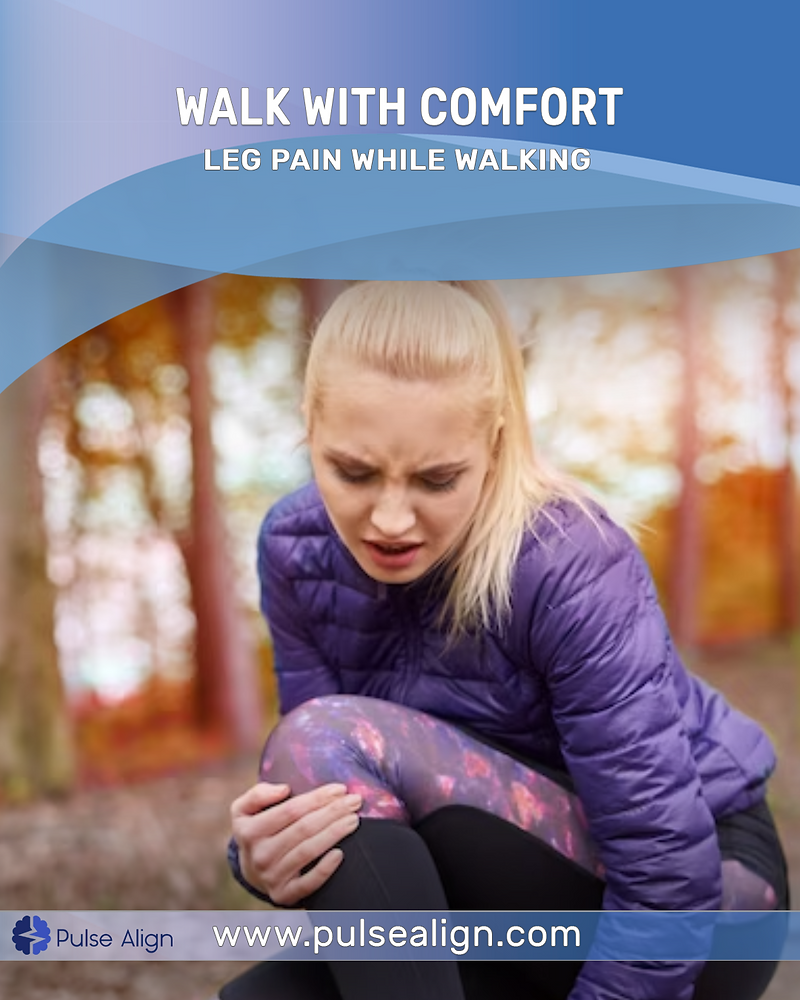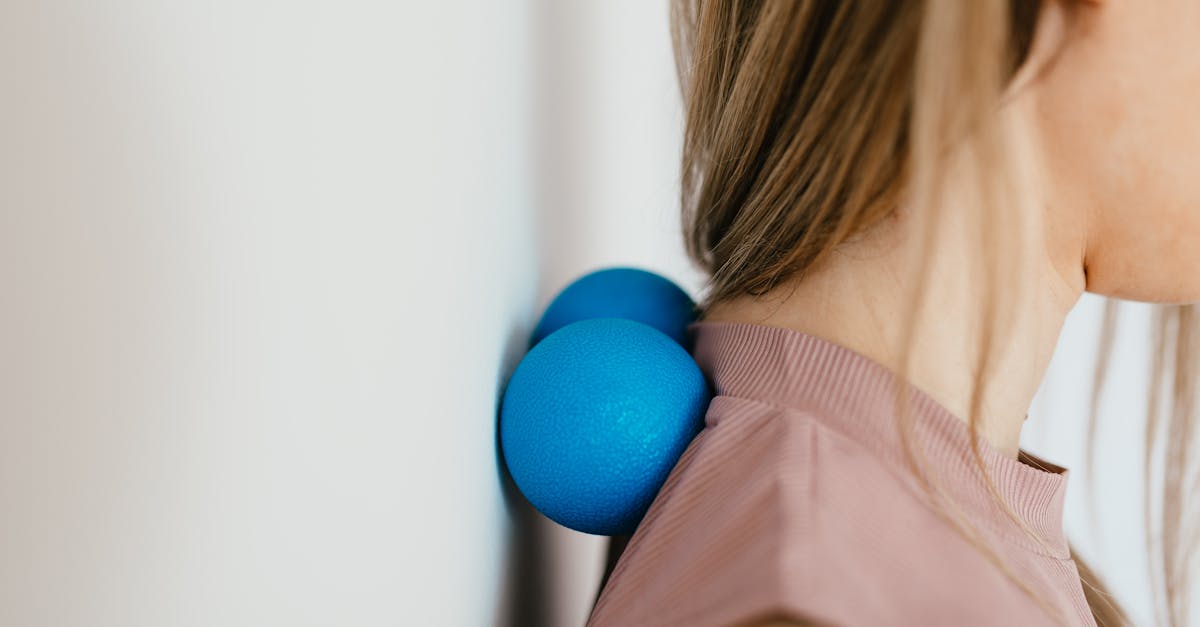Walking, a seemingly simple and natural activity can become a source of discomfort for many individuals. Whether it’s due to muscle fatigue, joint pain, or other issues, the quest to walk with comfort is a common pursuit.
Leg pain is typically of short duration or acute, lasting from a few days to a few weeks. Self-care usually leads to improvement, and if it persists for a duration of 4 to 12 weeks, it is finished subacute leg pain
In this blog post, we’ll delve into the intricacies of walking with comfort and explore the potential benefits of Pulse Align—a holistic approach to address the root causes of leg discomfort, rather than merely alleviating symptoms.
Understanding Leg Discomfort
leg pain During walking can manifest in various forms, including muscle soreness, joint pain, or general unease. Identifying the root causes of these issues is crucial for effective long-term solutions. Factors such as improper biomechanics, muscle imbalances, and joint misalignment can contribute to discomfort during walking.
How to Walk with Comfort?
Walking with comfort involves paying attention to various factors, from footwear to posture. Here are some tips to help you walk with comfort:
Choose the right footwear
Select shoes that provide proper arch support and cushioning.
Ensure the shoes have a comfortable and roomy toe box.
Replace worn-out shoes as they may not offer adequate support.
Proper shoe size
Ensure your shoes are the right size. Ill-fitting shoes can cause discomfort and foot problems.
Invest in quality socks
Wear moisture-wicking socks to keep your feet dry and reduce the risk of blisters.
Maintain good posture
Stand tall with your shoulders relaxed and your head up.
Engage your core muscles to provide stability and support.
Take comfortable strides
Walk at a natural pace, and take steps that feel comfortable for you.
Avoid overstriding, which can cause discomfort and fatigue.
Stretch before and after walking
Perform gentle stretching exercises to warm up your muscles before walking.
Stretch again after your walk to prevent stiffness.
Gradual increase in activity
If you’re new to walking or increasing your walking duration, do so gradually to avoid overexertion.
Mind your walking surface
Choose smooth and even walking surfaces to reduce the impact on your joints.
Be cautious on even terrain and watch for obstacles.
Stay hydrated
Drink enough water to stay hydrated, which helps maintain joint health and overall comfort.
Listen to your body
Pay attention to any discomfort or pain. If you experience pain, it’s essential to address the issue promptly.
Use walking aids if needed
If you have specific conditions or concerns, consider using walking aids like a cane or walking poles for added stability.
Practice good foot care
Keep your toenails trimmed, and moisturize your feet to prevent dryness and cracking.
Remember that comfort is subjective, and it’s essential to tailor these tips to your specific needs and preferences.
Walk with comfort and Proper Alignment
Heading towards a solution, it’s essential to understand the role of proper alignment in achieving comfort during walking. Misalignment can place unnecessary stress on muscles and joints, leading to discomfort and pain. This is where Pulse Align comes into play—a comprehensive approach that aims to address the underlying causes of leg discomfort by focusing on alignment.
Press Align: Addressing Root Causes
Benefits of Pulse Align
Improved Biomechanics: Pulse Align emphasizes the improvement of biomechanics, ensuring that the body moves in a way that minimizes stress on joints and muscles. This can result in enhanced comfort during walking.
Muscle Balance: The system targets muscle imbalances, promoting a harmonious interplay between different muscle groups. This balanced muscle function is vital for reducing discomfort and optimizing walking efficiency.
Joint Alignment: Pulse Align pays special attention to joint alignment, a key factor in walking comfort. By addressing misalignments, the system aims to alleviate stress on joints and enhance overall mobility.
Addressing Root Causes vs. Symptom Relief
It’s crucial to distinguish between addressing root causes and merely relieving symptoms. While many approaches focus on providing immediate relief, Pulse Align stands out by targeting the underlying issues contributing to leg discomfort. This approach aligns with the philosophy of promoting long-term well-being through a natural return to normal function.
The Pulse Align Care System
Understanding the Approach
Press Align isn’t just a set of exercises; It’s a holistic system designed to address the root causes of leg discomfort. The approach includes targeted exercises, stretching routines, and lifestyle recommendations to promote overall well-being.
Lifestyle Changes for Improved Well-being
Ergonomic Considerations: Pulse Align encourages individuals to evaluate their daily activities, including workstations and sitting habits, to ensure optimal alignment and reduce stress on the legs.
Footwear Choices: The impact of footwear on walking comfort is often underestimated. Pulse Align advises on suitable footwear that supports natural alignment and minimizes discomfort.
Conclusion
In conclusion, achieving comfort during walking is a multi-faceted journey that goes beyond superficial symptom relief. Pulse Align emerges as a holistic solution, addressing the root causes of leg discomfort through improved biomechanics, muscle balance, and joint alignment. Real statistics and scientific studies support the effectiveness of Pulse Align, making it a compelling option for those seeking long-term solutions.
As we invite readers to consider lifestyle changes for improved well-being, exploring Pulse Align becomes a natural step toward a more comfortable and fulfilling walking experience. Embrace the holistic approach, and let your strides be a testament to the harmony between your body and the act of walking. Walk with comfort, naturally.
Hartvigsen, L., Hestbaek, L., Lebouef-Yde, C., Vach, W., & Kongsted, A. (2017). Leg pain location and neurological signs relate to outcomes in primary care patients with low back pain. BMC Musculoskeletal Disorders, 18(1), 1-15.https://bmcmusculoskeletdisord.biomedcentral.com/articles/10.1186/s12891-017-1495-3
As the visionary CEO of Pulse Align, François is dedicated to transforming the landscape of pain management and posture health. With a deep-rooted passion for innovation and a commitment to excellence, François leads the team in developing cutting-edge solutions that empower individuals to live healthier, pain-free lives. Under his leadership, Pulse Align has become a beacon of hope and support for those navigating postural-related issues and chronic pain. François brings a wealth of experience in neuromodulation and patient management technologies, combining strategic insight with a compassionate approach to address the unique challenges faced by each individual.




